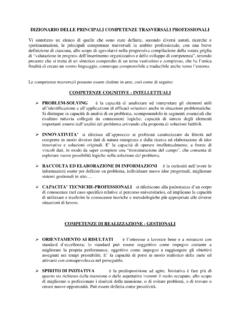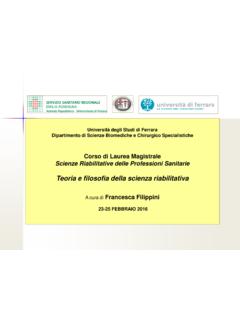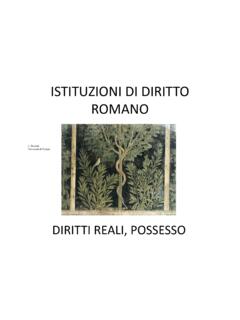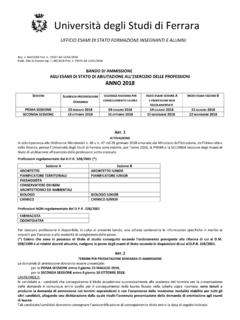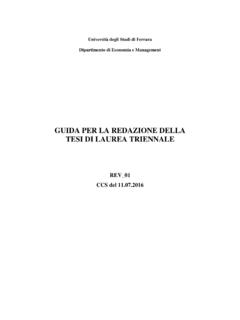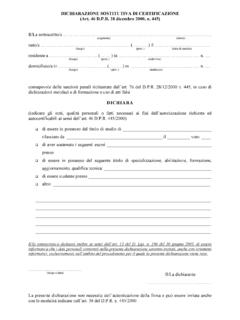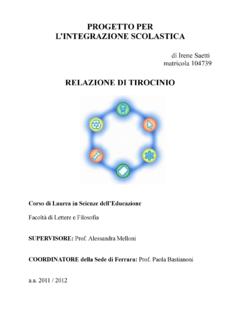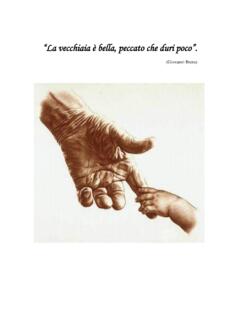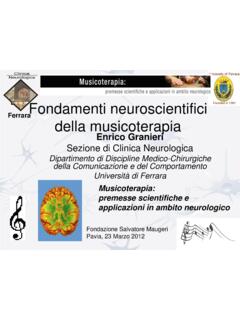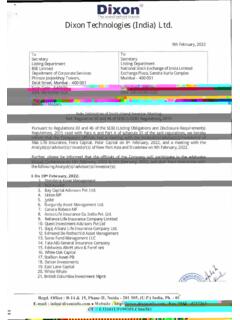Transcription of The Emperor of All Maladies - Unife
1 SCRIBNERA Division of Simon & Schuster, Avenue of the AmericasNew York, NY 2010 by Siddhartha Mukherjee, rights reserved, including the right to reproduce this book or portions thereofin any form whatsoever. For information address Scribner Subsidiary Rights Department,1230 Avenue of the Americas, New York, NY Scribner hardcover edition November 2010 SCRIBNER and design are registered trademarks of The Gale Group, Inc.,used under license by Simon & Schuster, Inc., the publisher of this information about special discounts for bulk purchases,please contact Simon & Schuster Special Sales at 1-866-506-1949or Simon & Schuster Speakers Bureau can bring authors to your live more information or to book an event contact the Simon & Schuster Speakers Bureauat 1-866-248-3049 or visit our website at in the United States of America1 3 5 7 9 10 8 6 4 2 Library of Congress Control Number: 2010024114 ISBN 978-1-4391-0795-9 ISBN 978-1-4391-8171-3 (ebook)Photograph credits appear on page SANDLER (1945 1948),and to those who came beforeand after him.
2 Illness is the night-side of life, a more onerous citizenship. Everyone who is born holds dualcitizenship, in the kingdom of the well and in the kingdom of the sick. Although we all prefer to useonly the good passport, sooner or later each of us is obliged, at least for a spell, to identifyourselves as citizens of that other place. Susan SontagContentsAuthor s NoteProloguePart One: Of blacke cholor, without boyling Part Two: An Impatient WarPart Three: Will you turn me out if I can t get better? Part Four: Prevention Is the CurePart Five: A Distorted Version of Our Normal Selves Part Six: The Fruits of Long EndeavorsAtossa s WarAcknowledgmentsNotesGlossarySelected BibliographyPhotograph CreditsIndex In 2010, about six hundred thousand Americans, and more than 7 million humans aroundthe world, will die of cancer.
3 In the United States, one in three women and one in twomen will develop cancer during their lifetime. A quarter of all American deaths, andabout 15 percent of all deaths worldwide, will be attributed to cancer. In some nations,cancer will surpass heart disease to become the most common cause of s NoteThis book is a history of cancer. It is a chronicle of an ancient disease once a clandestine, whispered-about illness that has metamorphosed into a lethal shape-shifting entity imbued withsuch penetrating metaphorical, medical, scientific, and political potency that cancer is often describedas the defining plague of our generation. This book is a biography in the truest sense of the word an attempt to enter the mind of this immortal illness, to understand its personality, to demystify itsbehavior.
4 But my ultimate aim is to raise a question beyond biography: Is cancer s end conceivable inthe future? Is it possible to eradicate this disease from our bodies and societies forever?The project, evidently vast, began as a more modest enterprise. In the summer of 2003, havingcompleted a residency in medicine and graduate work in cancer immunology, I began advancedtraining in cancer medicine (medical oncology) at the Dana-Farber Cancer Institute andMassachusetts General Hospital in Boston. I had initially envisioned writing a journal of that year aview-from-the-trenches of cancer treatment. But that quest soon grew into a larger exploratoryjourney that carried me into the depths not only of science and medicine, but of culture, history,literature, and politics, into cancer s past and into its characters stand at the epicenter of this story both contemporaries, both idealists, bothchildren of the boom in postwar science and technology in America, and both caught in the swirl of ahypnotic, obsessive quest to launch a national War on Cancer.
5 The first is Sidney Farber, the fatherof modern chemotherapy, who accidentally discovers a powerful anti-cancer chemical in a vitaminanalogue and begins to dream of a universal cure for cancer. The second is Mary Lasker, theManhattan socialite of legendary social and political energy, who joins Farber in his decades-longjourney. But Lasker and Farber only exemplify the grit, imagination, inventiveness, and optimism ofgenerations of men and women who have waged a battle against cancer for four thousand years. In asense, this is a military history one in which the adversary is formless, timeless, and , too, there are victories and losses, campaigns upon campaigns, heroes and hubris, survival andresilience and inevitably, the wounded, the condemned, the forgotten, the dead.
6 In the end, cancertruly emerges, as a nineteenth-century surgeon once wrote in a book s frontispiece, as the Emperor ofall Maladies , the king of terrors. A disclaimer: in science and medicine, where the primacy of a discovery carries supreme weight,the mantle of inventor or discoverer is assigned by a community of scientists and there are many stories of discovery and invention in this book, none of these establishes anylegal claims of work rests heavily on the shoulders of other books, studies, journal articles, memoirs, andinterviews. It rests also on the vast contributions of individuals, libraries, collections, archives, andpapers acknowledged at the end of the acknowledgment, though, cannot be left to the end.
7 This book is not just a journey into the pastof cancer, but also a personal journey of my coming-of-age as an oncologist. That second journeywould be impossible without patients, who, above and beyond all contributors, continued to teachand inspire me as I wrote. It is in their debt that I stand debt comes with dues. The stories in this book present an important challenge in maintainingthe privacy and dignity of these patients. In cases where the knowledge of the illness was alreadypublic (as with prior interviews or articles) I have used real names. In cases where there was noprior public knowledge, or when interviewees requested privacy, I have used a false name, anddeliberately confounded identities to make it difficult to track them.
8 However, these are real patientsand real encounters. I urge all my readers to respect their identities and desperate grownBy desperate appliance are relieved,Or not at all. William Shakespeare,HamletCancer begins and ends with people. In the midst of scientific abstraction, it is sometimespossible to forget this one basic fact.. Doctors treat diseases, but they also treatpeople, and this precondition of their professional existence sometimes pulls them in twodirections at once. June GoodfieldOn the morning of May 19, 2004, Carla Reed, a thirty-year-old kindergarten teacher from Ipswich,Massachusetts, a mother of three young children, woke up in bed with a headache. Not just anyheadache, she would recall later, but a sort of numbness in my head.
9 The kind of numbness thatinstantly tells you that something is terribly wrong. Something had been terribly wrong for nearly a month. Late in April, Carla had discovered a fewbruises on her back. They had suddenly appeared one morning, like strange stigmata, then grown andvanished over the next month, leaving large map-shaped marks on her back. Almost indiscernibly, hergums had begun to turn white. By early May, Carla, a vivacious, energetic woman accustomed tospending hours in the classroom chasing down five- and six-year-olds, could barely walk up a flightof stairs. Some mornings, exhausted and unable to stand up, she crawled down the hallways of herhouse on all fours to get from one room to another.
10 She slept fitfully for twelve or fourteen hours aday, then woke up feeling so overwhelmingly tired that she needed to haul herself back to the couchagain to and her husband saw a general physician and a nurse twice during those four weeks, but shereturned each time with no tests and without a diagnosis. Ghostly pains appeared and disappeared inher bones. The doctor fumbled about for some explanation. Perhaps it was a migraine, she suggested,and asked Carla to try some aspirin. The aspirin simply worsened the bleeding in Carla s white , gregarious, and ebullient, Carla was more puzzled than worried about her waxing andwaning illness. She had never been seriously ill in her life. The hospital was an abstract place forher; she had never met or consulted a medical specialist, let alone an oncologist.

